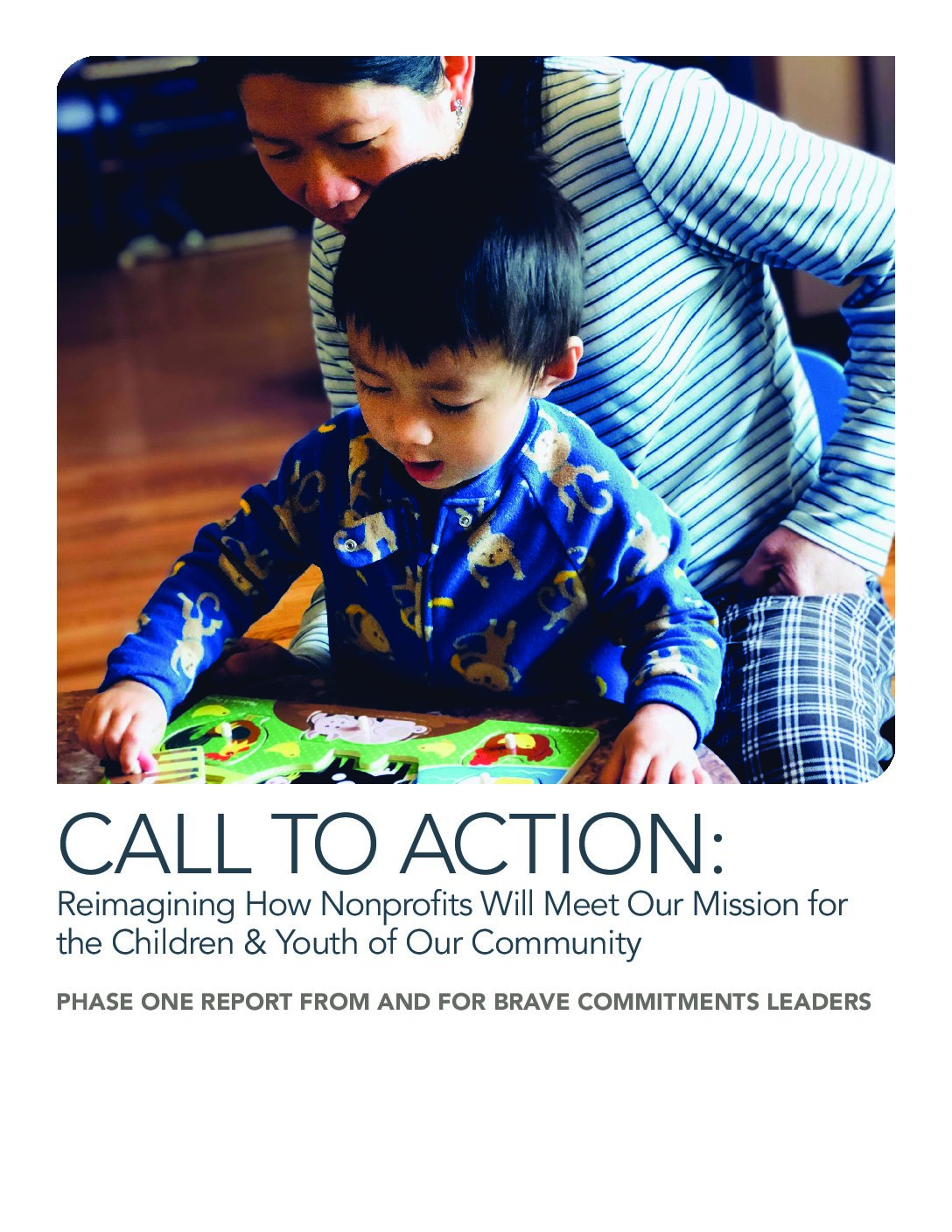Brave Commitments Report–State of the Nonprofit Sector for Youth in King County
How Brave Commitments Has Come to Be
Over the last few years, Friends of Youth former President and CEO Terry Pottmeyer has spent a great deal of time thinking about the future, both for Friends of Youth, and for the youth serving nonprofit sector. Over that time, Terry has spoken to many of her colleagues – other nonprofit leaders of youth organizations – about the myriad of issues that have placed extraordinary stress on their organizations, and the youth sector as a whole, including:
- Several of our nonprofit organizations are facing deficits, and year over year losses. They are quietly working to keep their doors open—quietly, and in some cases, alone, for fear that a broader conversation could de-stabilize their already struggling organizations by decreasing confidence in, and donations to, their agency
- The economic recovery has created a very competitive job market, making it much harder to hire and retain staff, while at the same time not noticeably decreasing the need for services—so, the same need and fewer staff resources
- Turnover in our sector is very high—40% is not uncommon—meaning that we are retraining half our staff each year and there are fewer applicants
- Government service funding doesn’t cover the cost of the work—and there is a reluctance on the part of most nonprofits to ask for the funding necessary to cover the real cost (we instead promise that we will be ‘braiding funding’, or ‘leveraging funding’—and we’ve accepted the burden of creating funding solutions while agreeing to meet outcomes that are not fully funded)
- Sweeping changes in health care—the Medicaid waiver, bi-directional health care, pay for performance— require a great deal of planning and thinking and deciding—but most organizations are spending a lot of their time trying to keep the doors open, never mind figuring out what the future holds
- Increasingly burdensome compliance expectations—the annual audit we all undergo no longer checks the box; each funder wants to do an audit as well—and the increased expense, time and effort this creates is a serious issue
- Nonprofit proliferation–when new ideas to address community needs arise our cultural bias seems to be to start your own nonprofit rather than collaborating with an existing organization, increasing the difficulty of fundraising and donor bewilderment
- United Way funding is decreasing or going away—United Way was a commitment by the community to a safety net that everyone in the community funded; this model has unraveled
1
• The impact of racism and classism on our clients and organizations, and the urgent need to transform our work to address inequities. A range of chronic issues impact our ability to achieve our mission: coercive connections to agencies, cultural responsiveness of interventions and practitioners, scheduling and transportation barriers, experience of practitioners, pragmatism of interventions, client centered vs. intervention centered.
While not an exhaustive list, an invitation based on these issues has stimulated interest from nearly 30 nonprofit youth sector leaders to launch a Brave Commitments process to determine how we can best meet our mission for the children, youth and young adults of our community in the coming years, in the face of very strong head winds.
Put another way, we should be deciding how to best organize ourselves to ensure that our kids get what they need today, and tomorrow, rather than let market forces or the system define it for us.
This conversation requires trust and building closer working relationships.
This report summarizes the results of the leaders’ first five meetings, 19 individual interviews, and reflection and deliberation on the other recent assessments and plans that have, in total, failed to fully address the sustainability of youth organizations and the system as a whole.
Did you find this useful?
Get notified when more great resources are published on glickdavis.com!

